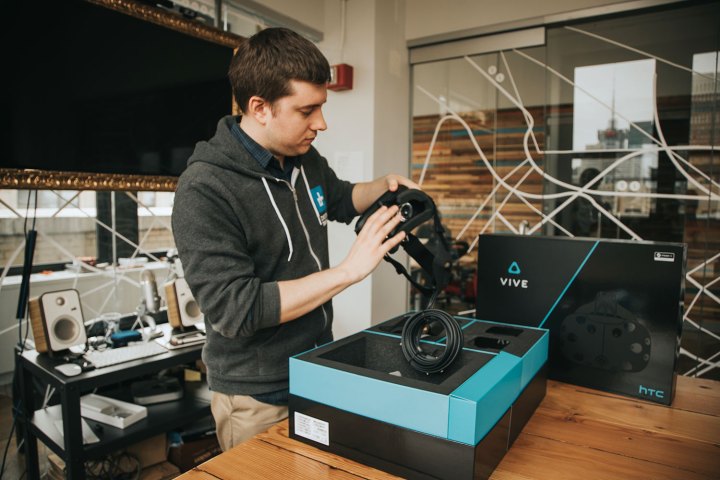
Although there are certainly arguments to be made about more Oculus Rifts being pre-ordered than HTC Vives (at least initially) it seems that now HTC’s manufacturing experience is coming to bear.
This two to three day shipping period that HTC is quoting is available in 24 countries around the world, making it easier than ever to get a hold of a consumer-grade VR headset. To help encourage its uptake, HTC has also expanded demo locations around the world, offering them in Microsoft Stores, Gamestops and Micro Centers.
Those locations will also begin carrying dedicated stock of their own shortly, with pre-orders from those locations starting to ship out this week.
“Since beginning pre-orders at the end of February and shipping in early April, we’ve seen incredible interest in Vive,” said Dan O’Brien, VP of VR at HTC, who we previously interviewed on the status of Oculus exclusives.
“Working with our retail partners has only enhanced that momentum because more people are able to try the only truly immersive virtual reality offering on the market today.”
Don’t expect this increased shipping to do much for the price, which still sits at $800 + shipping in the U.S.. It does however come with the headset, Lighthouse tracking stations, and the pair of motion controllers which make gesture interaction and room-scale VR possible.
Those were enough for us to hail it as the best VR hardware out there right now. Although it is still a technology for early adopters, and those with enough space to really appreciate it, there are now over 200 experiences and games to play around with, so there is plenty of content to try.
Do you own a Vive? If so, what’s your favorite experience so far?
Editors' Recommendations
- Apple shares new Vision Pro ad just days before launch
- Everything HTC announced at ViveCon 2021: Vive Focus 3 and Vive Pro 2
- Two new ‘game-changing’ VR headsets could arrive at HTC’s ViveCon next week
- Apple reportedly working on an AR headset with Vive-like controllers
- HTC offers cheaper Vive Pro Eye bundles, expands eye-tracking in VR




